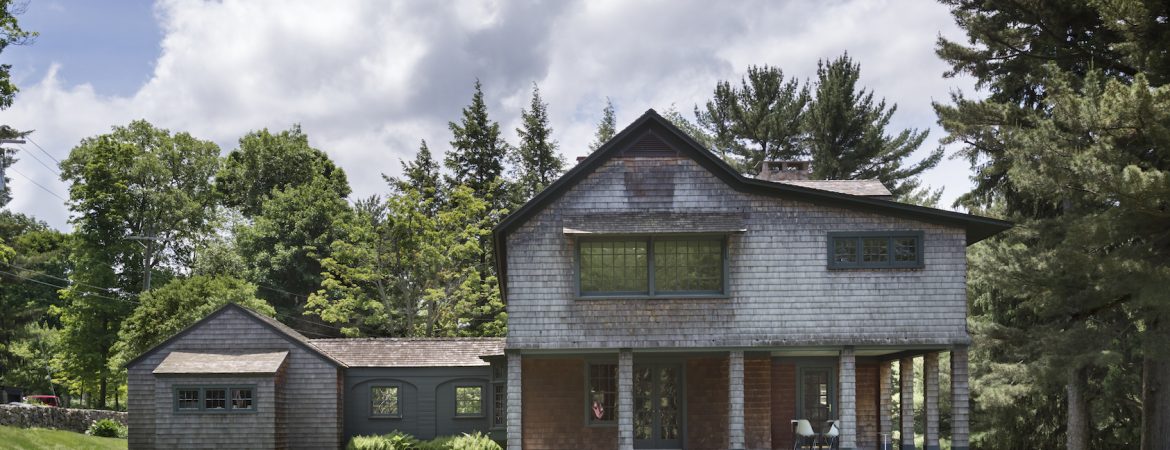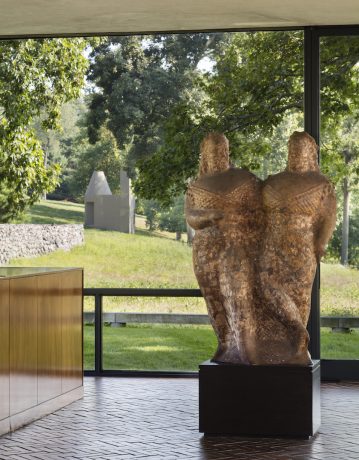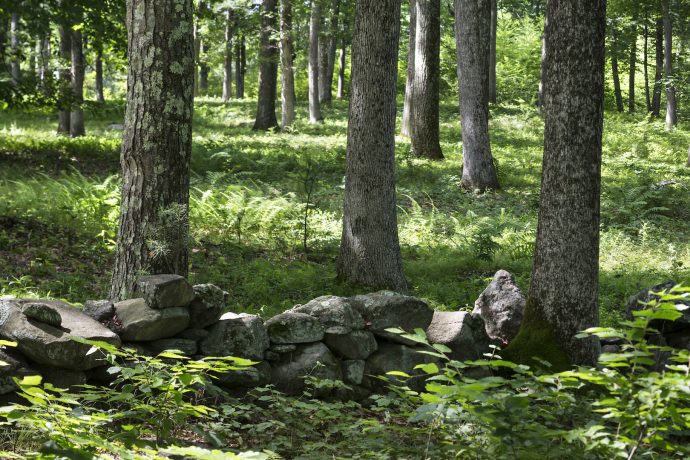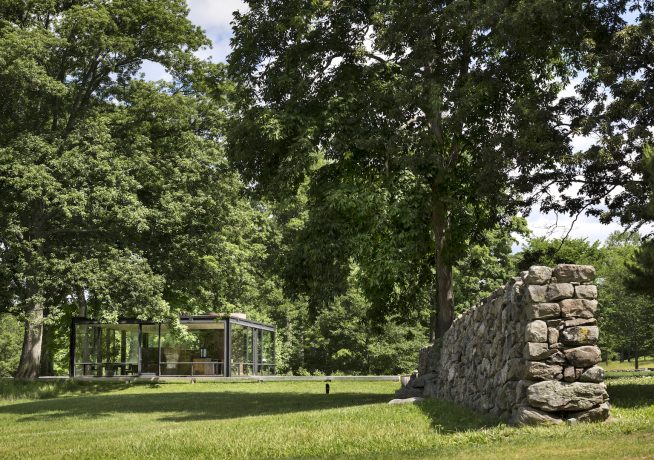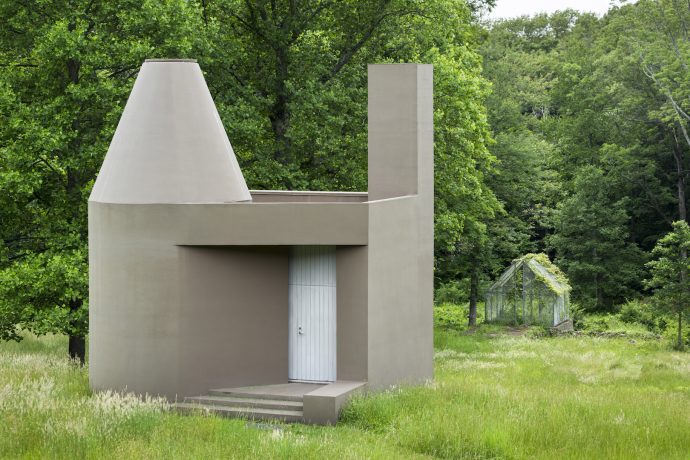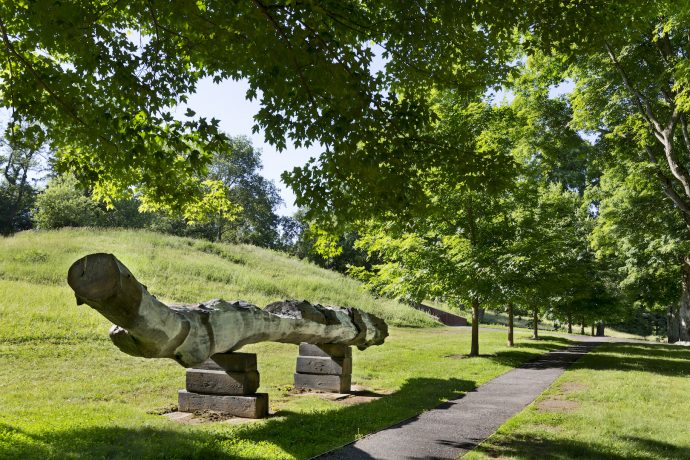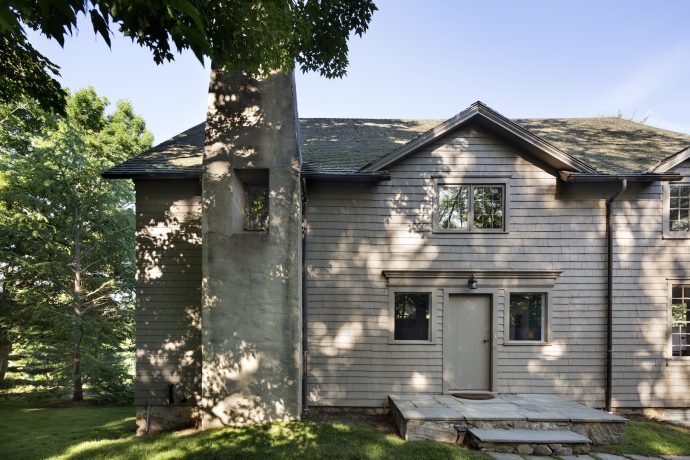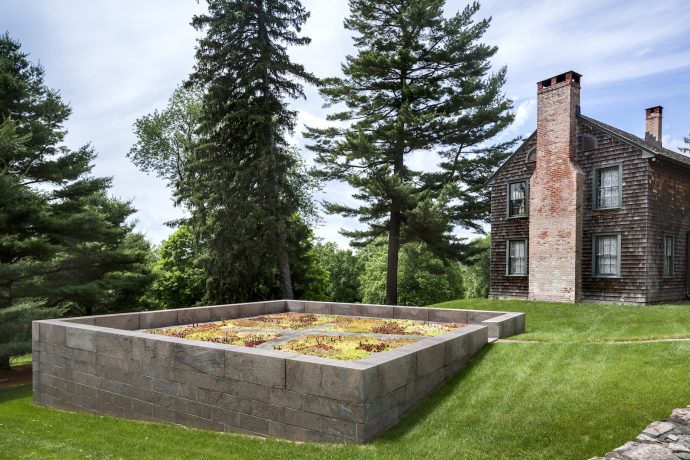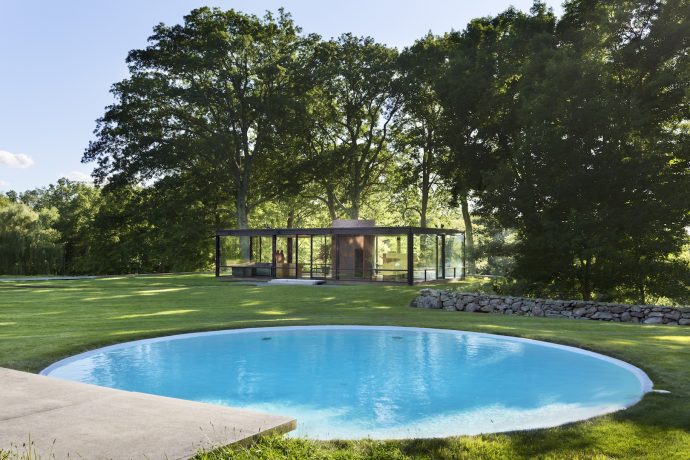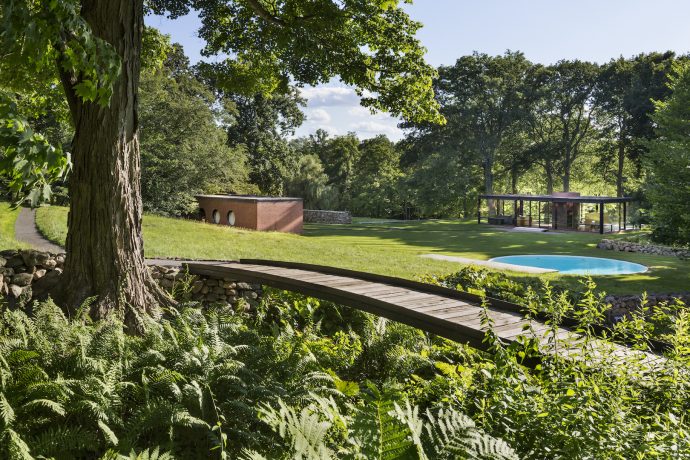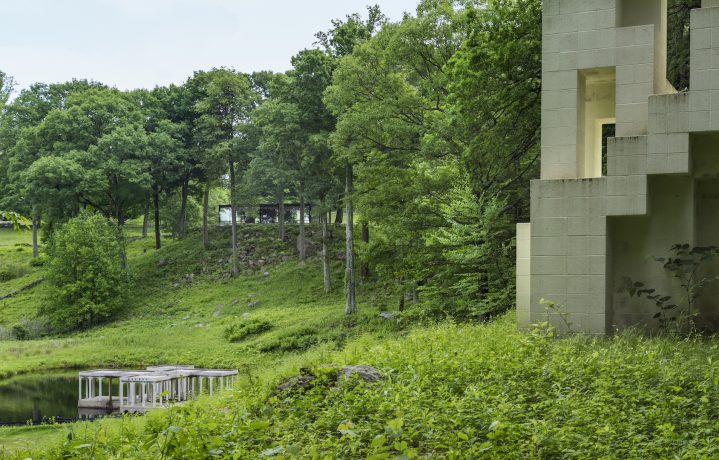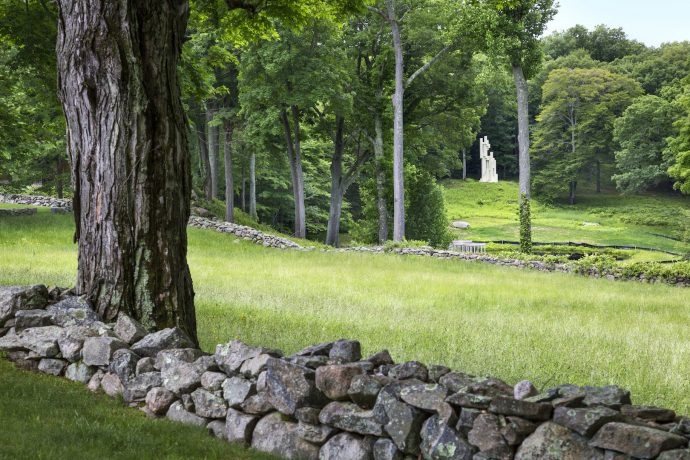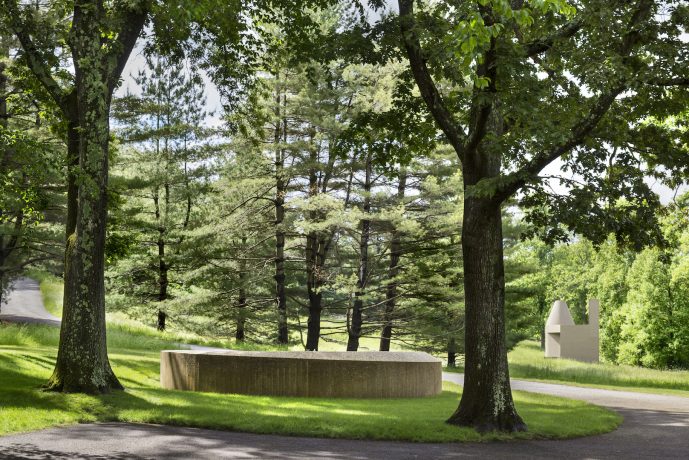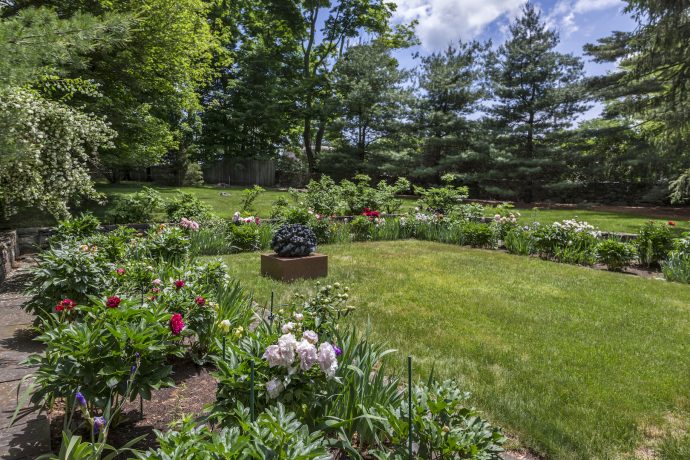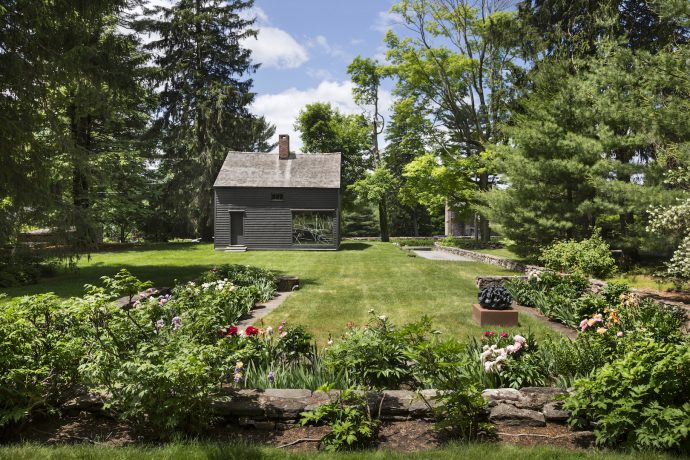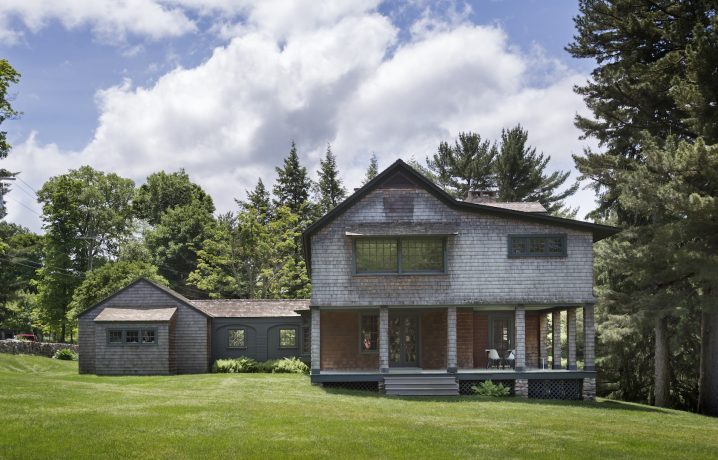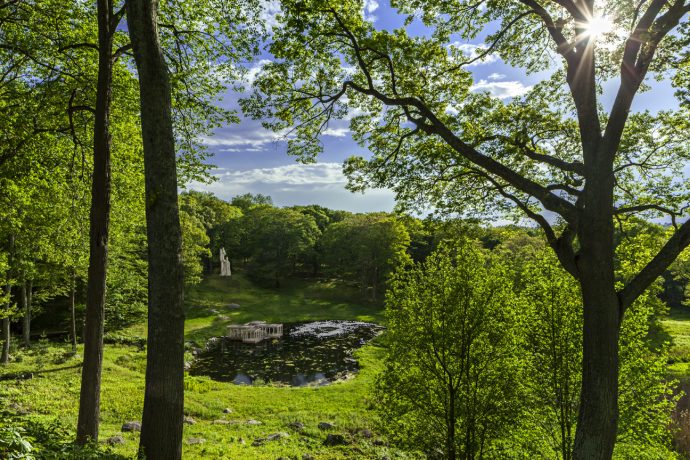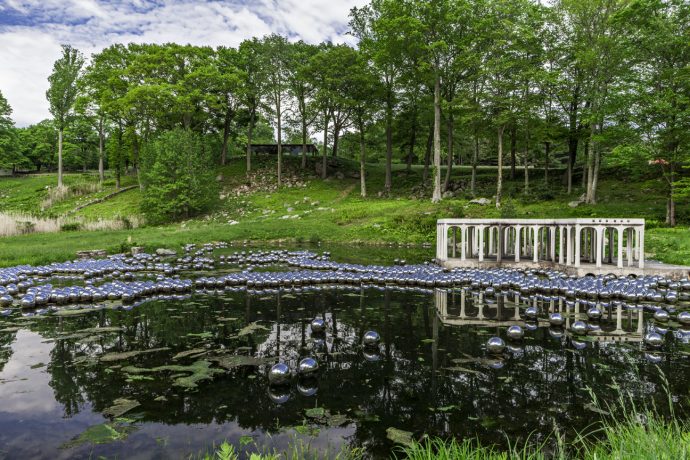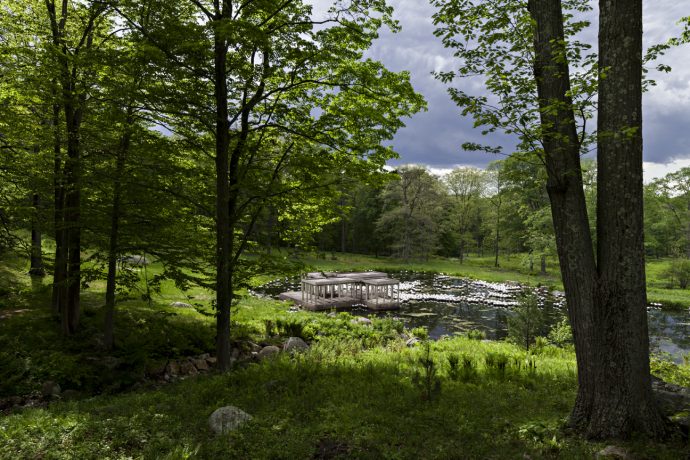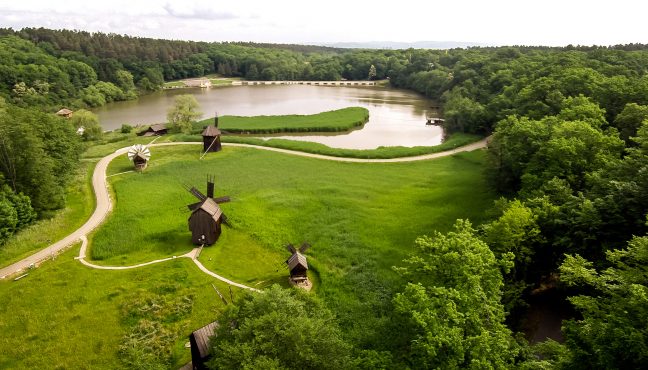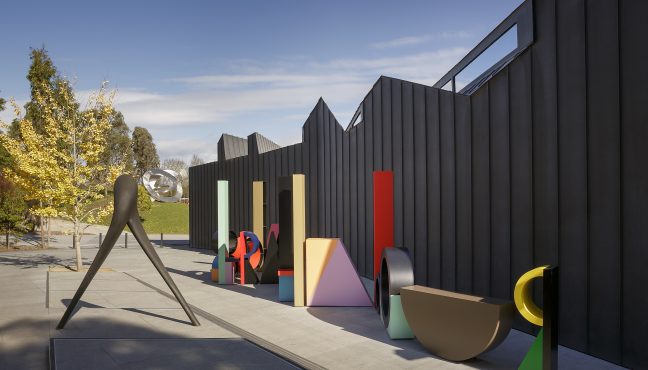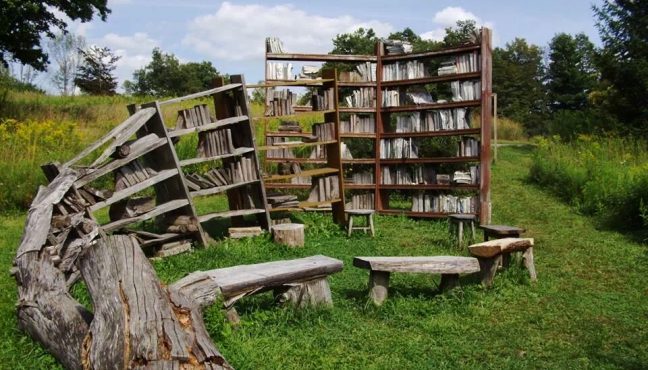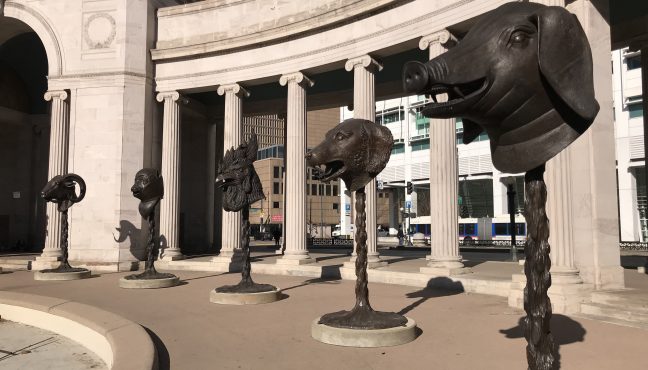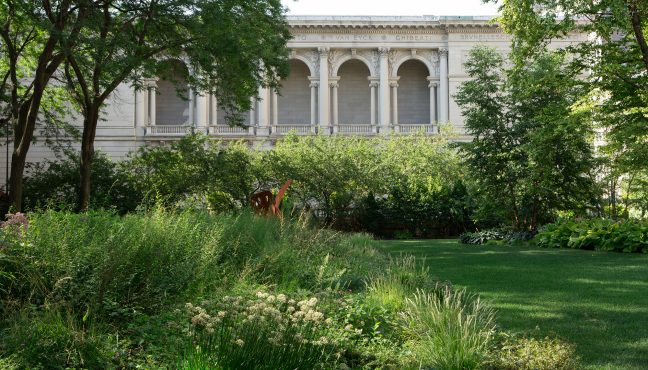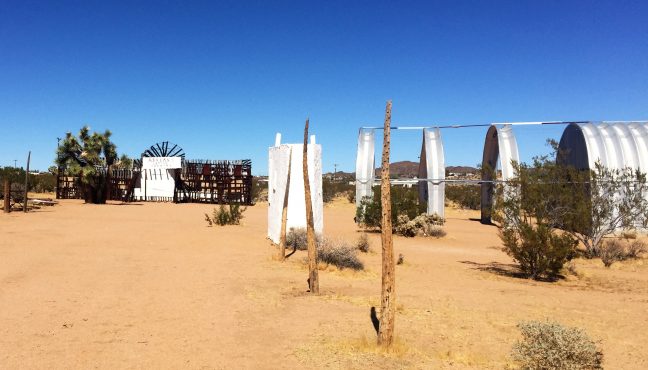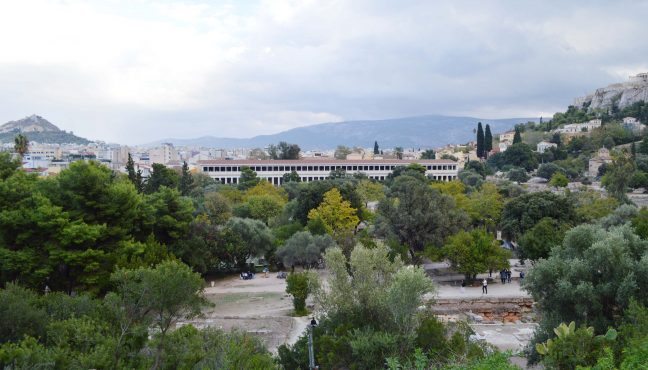It is always a pleasure to see where great artists get their inspiration from and what their studios and residences look like. It is even more interesting when an artist himself creates a place that he calls home. One of the unique examples of a household that an artist left for generations to admire is Glass House by a famous American architect Philip Johnson that you can visit in New Canaan Connecticut.
If you are interested in architecture and landscape design, this is a must-SEE! Now a National Historic Landmark, Glass House was an epitome of mid-20th century modern architecture that experimented with minimal structure, geometry, proportion, and the effects of transparency and reflection. Hidden from the street, the Glass House is actually see-through: the exterior sides are charcoal-painted steel and glass, the interior is an open space, divided by low walnut cabinets; a brick cylinder contains the bathroom and is the only object to reach floor to ceiling. The estate also includes the Brick House, that first served as a guest house and later became Johnson's study; underground Painting Gallery with an entrance modeled on Agamemnon's tomb; a Sculpture Gallery; red and black "Da Monsta" gatehouse, built without right angles and from modified gunite; and a few other spaces that Johnson called his "follies" because their size or shape and a beautiful pond.
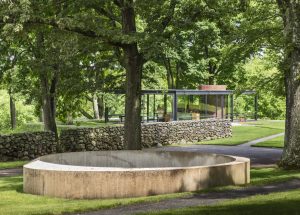
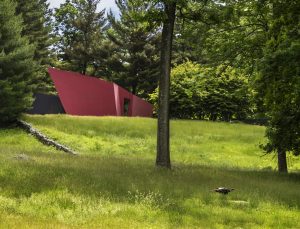
In order to get in, you must book tickets in advance. Your tour will begin at the Visitor's Center (right across from the train station, so keep it in mind if you don't want to drive), you will be shuttled through beautiful grounds and taken to the site. You can choose from one hour and two hours tours with very knowledgeable and fun guides that will answer all your questions and provide umbrellas if necessary. Note that either tour includes quite a bit of walking, but it is a beautiful walk, since the entire landscape was developed by Philip Johnson along with his partner David Whitney, art critic and curator. The landscape is partially a reflection of a painting "The Funeral of Phocion" by Nicolas Poussin that was placed in a seating area of Glass House. The view through the glass walls to the landscaped grounds was strikingly similar. And almost nothing was changed after Johnson's death. He lived on the property together with David Whitney from 1960 and they passed away the same year 2005, Johnson in January and Whitney in June. Whitney left a bequest to support programming and maintenance of the Glass House.
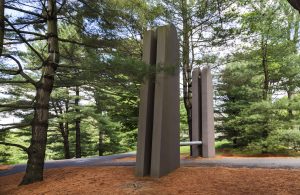
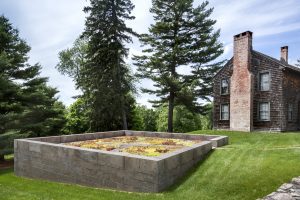
Today, you can not only admire the beautiful Glass House and charming landscape, but also visit exhibitions by world class contemporary artists, whose works look even more dazzling surrounded by Philip Johnson's lands.
We talked to Irene Shum Allen – Curator and Collections Manager at Philip Johnson Glass House about the estate and its history.
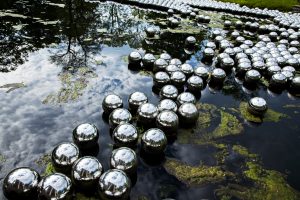
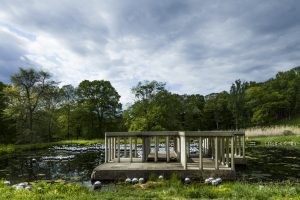
The unique Glass House is a reflection of the architect himself, but perhaps he invited any other artists to participate in creation of the space?
The Glass House campus is the singular vision of Philip Johnson. With the exception of the vernacular shingle style structures (Popestead, Calluna, Grainger), all the buildings and structures on site are designed by Philip Johnson. The only two consultants were hired to help Johnson accentuate his designs: lighting designer Richard Kelly, who helped to create the Glass House's lighting scheme and landscape lighting plan; and color specialist Donald Kaufman, who helped pick out the paint color for the Gate, Library Study, Da Monsta, and Grainger. The only element on the property that was not designed by Johnson is Donald Judd's first outdoor concrete sculpture.
After Philip Johnson passed away, were there any art or landscape additions to the park?
Two acres were added after Johnson's death. This was part of the view shed initiative to protect the land immediately adjacent to the Glass House property from estate development. The Glass House is a non-collecting museum, but on occasion, artworks are added. In 2010, Sarah Morris was commissioned to create the film Points on a Line, which helped to interpret the relationship between Mies van der Rohe's Farnsworth House and Philip Johnson's Glass House. Both the Farnsworth House and the Glass House are sites of the National Trust for Historic Preservation.
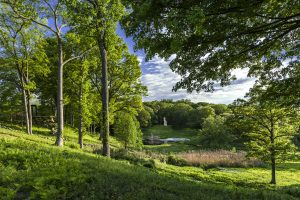
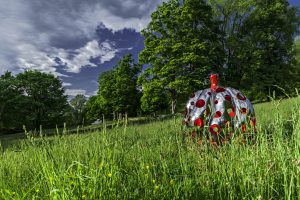
What is the curatorial strategy behind choosing an artist for an exhibition?
As a site of the National Trust for Historic Preservation, brick and mortar preservation projects and initiatives are priority at the Glass House, as are art exhibitions and artist projects important that maintain and grow the legacy of Philip Johnson as an art patron.
Do you hold any special events on Glass House premises?
We do talks, tours, contemporary art exhibitions, dance performances and have an annual Summer Party.
Next time we hope to visit the Glass House Summer Party to get a deeper feel of the beautiful estate and the land that inspired a great architect to create and influence other architects around the world.
